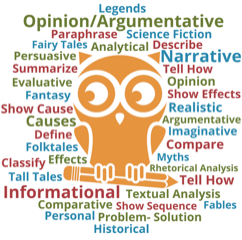Really, What's the Story?
Everything isn’t a story.
Fill in the blank. What would you most likely say? "Come to the carpet for a _____.”
Did you say “story”?
But is it? Or is it an informational book, an article, a persuasive text?
What we call texts we share with students matters, because the different terminology helps students differentiate if they are reading (and hence learning what it takes to write) a story or an expository text. If we lump them all as ‘stories,’ then it’s no wonder why students’ stories sound more like a procedure “First I…, Then I…, Next I…” or an informational recount, “I’m going to tell you all about my time at camp,” and why students have a hard time knowing what to write for certain prompts.
So let’s help build their awareness about the stylistic differences between texts by making sure we call them exactly what they are.
One last note: instead of “nonfiction,” let’s call them “informational.” When else do we refer to something by what it’s not? “Come sit down on this nontable.” “It’s time for nonbreakfast.” I know, it sounds so silly!
In Writing with Design we teach there are 3 domains of writing: informational, opinion/argumentative, and narrative, and that there are 33 (yes 33!) types of writing, each with different stylistic components. This level of specificity gives students the knowledge and confidence to write great stories, captivating arguments, and impressive informational reports.

